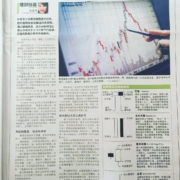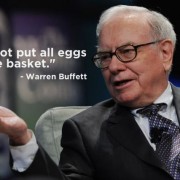Interview: If You Had $250,000, How Would You Allocate it?
Join our Telegram channel for more market analysis & trading tips: t.me/synapsetrading
Recently, during an interview, I was asked this question, to suggest a possible portfolio allocation for people in their early 30s, with $250k of investible cash to start with. Here is my answer in full:
If you only have $250k to start with, I would suggest a diversified approach of various asset classses to maximise returns:
- 25% allocated to cash (war chest)
- 10% to wild bets
- 20% to trading account
- 20% to commodities
- 20% to businesses, startups, angel investments
- 5% to stocks, REITs, ETFs
Currently, the bulk of the holdings is in cash, since the market is pretty “risk-on” at the moment with much political and economic uncertainty about trade wars and real wars. Hence, I only included minimal stock holdings, as the stock markets (S&P 500)are at 10-year highs, so I will wait to buy in at a lower price should the opportunity arise.
One important factor is the 20% allocation to trading account, as this generate monthly cashflow from stocks/forex trading to continue growing the total portfolio size aggressively, which can then be allocated to other asset classes within the portfolio.
10% to cryptocurrencies and startups is considered a “wild bet” which could be a zero or hero; lastly 20% to businesses is for people who have some prior experience to invest directly in businesses, or start their own. Personally, my portfolio includes several businesses, including a cafe and pub.
I have allocated 20% to commodities, as commodities are likely at their cycle low. The GSCI (Goldman Sachs Commodity Index) is one of the main benchmark for commodity prices, and the (GSCI/S&P 500) is used to measure the prices of commodities relative to stock prices. Currently, this measure is at a 50-year low, which suggests cheap commodities as a potential investment.

I have excluded real estate from this sample portfolio, as I do not include “own stay” property as an investment asset, and $250k is too small for any major property investment. For my own portfolio, i have invested in several properties as I feel that the Singapore property market will continue to rise for the next 5-10 years.
I have also excluded fixed income, as for Singaporeans, the CPF (SA account at 4%) is pretty much similar to a “risk-free” high-yield bond, hence it serves well as the fixed income component of the portfolio. For my own portfolio, i have hit the minimum sum, which will provide a good safety net for retirement. For non-Singaporeans, any pension/retirement scheme which offers a fixed payout would serve the same purpose.
I hope this has provided you a good template to start building your portfolio, but do keep in mind that ideally you should be looking to rebalance your portfolio every 1-3 months.
 Our flagship mentoring program is suitable for both beginners and advanced traders, covering the 4 strategies which I used over the past 15 years to build up my 7-figure personal trading portfolio.
Our flagship mentoring program is suitable for both beginners and advanced traders, covering the 4 strategies which I used over the past 15 years to build up my 7-figure personal trading portfolio.
 If you're looking for a reputable brokerage that covers all products (SG stocks, US stocks, global stocks, bonds, ETFs, REITs, forex, futures, crypto) and has one of the lowest commissions, this is what I currently use.
If you're looking for a reputable brokerage that covers all products (SG stocks, US stocks, global stocks, bonds, ETFs, REITs, forex, futures, crypto) and has one of the lowest commissions, this is what I currently use.
After trading for 18 years, reading 1500+ books, and mentoring 1000+ traders, I specialise in helping people improve their trading results, by using tested trading strategies, and making better decisions via decision science.












Leave a Reply
Want to join the discussion?Feel free to contribute!